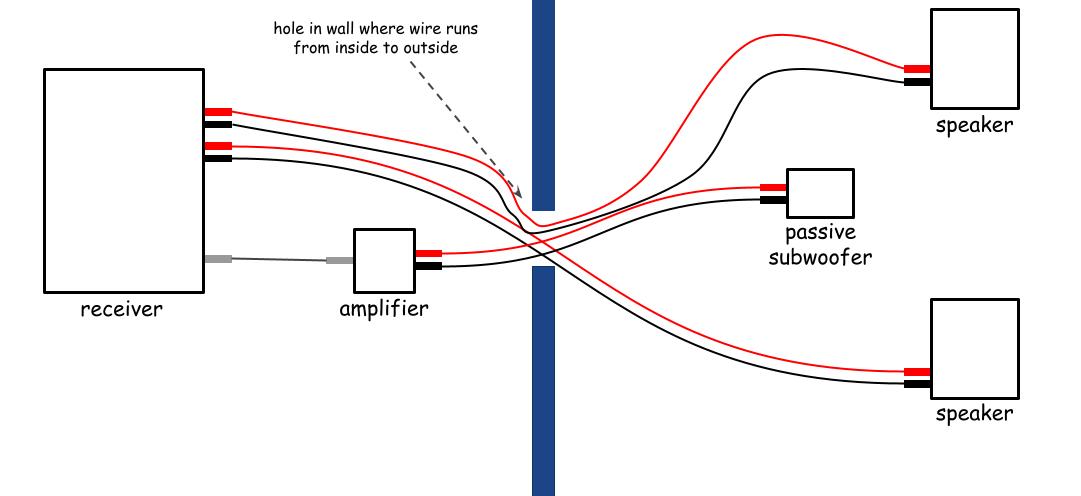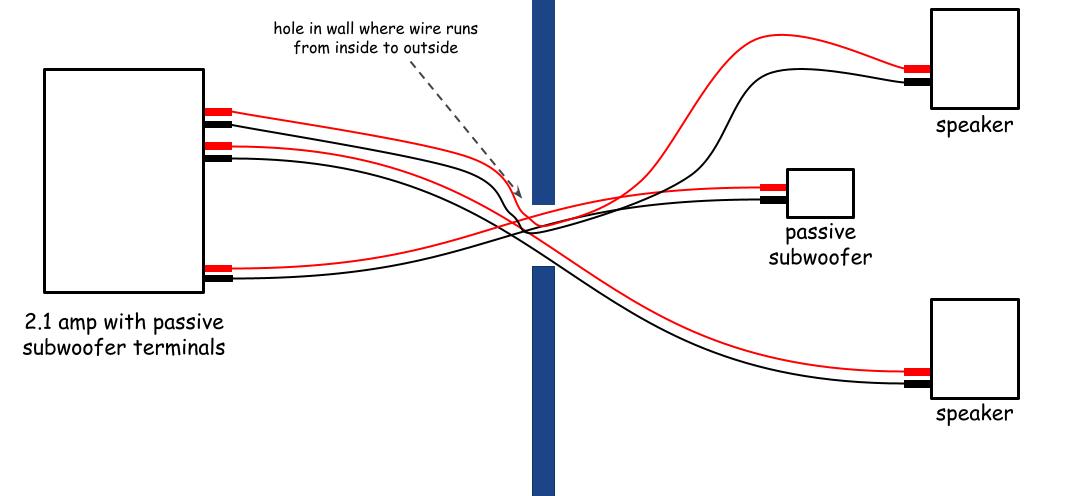A subwoofer is essentially required to make any sound system up to par by reasonable audiophile standards. A larger subwoofer can get maximally low and create full bass in a way that a smaller midrange driver can’t. A subwoofer also relieves mid range drivers from having to reproduce bass – this allows them to focus 100% on mid range reproduction, which they’re intended optimized for.
FAQ: Is Adding A Subwoofer To My Home Sound/Theater System Worth It?
Furthermore, sound – longer bass waves in particular – doesn’t carry as well outdoors, so the issue becomes all the more pertinent.
It wasn’t too long ago that non-commercial outdoor subwoofers didn’t really exist, but in just the last few years (and since this article was originally published) a variety of viable equipment options has come about, and we fully expect even more to come as the outdoor home audio market continues to get more popular and grow.
This article will review said options and tell you what you need to know about augmenting outdoor speakers with a subwoofer.
Special/Particular Considerations With Outdoor Subwoofers
Adding a subwoofer to a conventional indoor sound system is actually very easy since most home theater subwoofers are active/powered – you simply need to plug them into the wall, connect them to the sub-out line of your receiver (which almost all decent ones will have), and you’re good to go.
Outdoor subwoofers, however, are generally passive, mainly because having a built-in amplifier and other electronics in a speaker that’s sitting outdoors obviously opens the door to problems. This means that the standard sub-out connector on most receivers probably won’t be compatible with any given outdoor subwoofer.
Placing an outdoor subwoofer is a little trickier too. While most indoor subwoofers can simply be tucked away in a corner, that same relative corner outdoors might not work for placement or wiring. Centering a subwoofer between a pair of speakers on your deck or the lawn also won’t work either because it will probably be right where people are walking.
How to Connect An Outdoor Subwoofer
Until quite recently there was only one practical way to do this, but now, thanks to some recently released specialty equipment, there’s a second easier/simpler/cheaper way.
The first way: use a separate amplifier with your regular receiver
If you want to connect an outdoor subwoofer to your standard receiver with a sub-out connector, what you’ll need to do is run a standard subwoofer cable from that to a separate amplifier, then run the same outdoor speaker wire you’re running to your outdoor speakers from that to the passive subwoofer:
This obviously implies that you’ll need to buy an additional amplifier and cables to connect it. The added expense doesn’t necessarily have to be huge – you can probably do it with less than $100 – but it’s there nonetheless.
The second way: get an amplifier with a passive subwoofer output
You don’t see passive subwoofer outputs on a standard home theater receiver very often, and if it has one, it’s probably really expensive. However, plain amplifiers with passive subwoofer outputs have recently started to come out – presumably to in fact target this market niche – and are a great option for powering an outdoor sound system. They effectively simplify the diagram to this:
Fosi Audio has recently become the notable pioneer in this audio sub-market – they now make a variety of these types of amps. Check them out here (affiliate link). They also now make several dedicated passive subwoofer amps if you want to go the first route. Check those out here (affiliate link).
Is An Outdoor Subwoofer Actually Necessary?
What ultimately matters is that you like how your speakers sound, and that’s ultimately subjective. A pair of decent outdoor satellite speakers don’t *need* a subwoofer to function and could sound perfectly decent on their own. If you’re budget is limited as well, say less than four figures, it probably make senses to save the cost of a subwoofer and necessary ancillary equipment and just instead invest the saved money into the nicest possible speakers your budget permits.
You can always just try out standalone speakers and see if they sound satisfactory, then decide to add a subwoofer later. Good audio companies of course realize more than anyone that outdoor subwoofers are often unfeasible, and many current outdoor speakers now have quite respectable power and bass response on their own.
Can I just Use a Regular Subwoofer Outdoors?
NO. Don’t do this. For a few reasons:
Firstly, regular home theater subwoofers will not have certified weather resistance and will inevitably get damaged by the elements in a variety of possible ways. Ways that won’t be protected under the warranty for that matter.
Secondly, regular home theater subwoofers are designed to function in an enclosed room, usually a corner, while also sitting on a hard-ish surface. If you were to put one in the open air on grass or the dirt, the port and/or radiator won’t work properly and the sound will probably not propagate properly.
Thirdly, regular home theater subwoofers are active/powered and need to be plugged into an outlet somewhere, and that’s not going to be feasible or safe to do with most outdoor setups.
The Important Truth About Buying Audio Equipment
We always say the same thing in each of our roundup articles:
Product prices can fluctuate significantly in the audio market, and often times for no apparent reason.
Therefore, the “best” product choice often comes down to whatever the best available deal is at the time among the top/popular contenders. It’s definitely worthwhile to shop around. One tool that’s useful for doing this is Amazon best-sellers lists – they update hourly and these good deals often rise to the top. The table below is populated in real time with data from these best-sellers lists. You’ll usually see our picks among them.
The Overall Best Outdoor Subwoofer: The TIC GS50
TIC is an interesting company that solely makes outdoor speakers, and their GS50 on-ground omnidirectional subwoofer has been our top choice for a few years now. It has nice low response floor and high continuous power handling, all for a price much lower than what the rest of the current competition goes for. It also has an elevated woofer with a floor built in, so this doesn’t necessarily need to rest on a hard surface like some outdoor speakers do. TIC also produces our favorite budget omni-directional outdoor speaker, the GS3, and the GS50 is the perfect complement to that.












